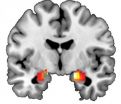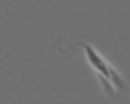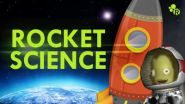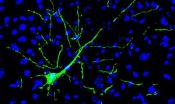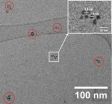(Press-News.org) SAN ANTONIO (Aug. 2, 2014) ― Scientists studying depression in teens have discovered that subtle changes in a gene can predict how the brain reacts to stress, which can cause such health issues as depression, post-traumatic stress disorder and obesity.
The research, published Aug. 2 in the journal Nature, focuses on two longitudinal studies led by Douglas E. Williamson, Ph.D., from The University of Texas Health Science Center at San Antonio, and Ahmad Hariri, Ph.D., from Duke University. Scientists from Columbia University and the University of Pittsburgh are also involved in the research.
Scientists have believed that the tendency to develop stress-related disorders is an inherited trait or is the result of exposure to traumatic events. In this paper, the researchers are also looking into another factor ― that genes may change over time, making some individuals with the same genetic makeup more susceptible to stress than others.
In these studies the researchers looked at the serotonin transporter, a gene that regulates the amount of serotonin signaling that occurs between brain cells and is frequently the target for antidepressant drugs. They proved the existence of a mechanism impacting the brain that also may play a role in an individual's reaction to stress, which may be a stronger predictor of stress than DNA sequencing. They used:
Functional magnetic resonance imaging (fMRI),
Saliva tests,
Blood tests, and
Examination of brain tissue from deceased individuals to prove their point.
Examining DNA methylation
Attached to the serotonin transporter's DNA are chemical marks called methyl groups that help regulate when, where and how much of the gene is expressed. DNA methylation (the chemical marks) are one form of gene modification, which scientists are studying to understand how the same genetic code can produce a wide range of cellular responses in the body, as well as differences in individuals' reaction to stress.
"Varying the DNA sequence in this gene has been shown to predict activation in the amygdala and is linked with depression, so we were interested in determining if DNA methylation may be playing a role in regulating how the brain responds to stress, ultimately making an individual vulnerable to stress-related disorders like depression," Dr. Williamson said. The amygdala is a region in the temporal lobe of the brain that helps shape behavioral and biological responses to threat and stress.
Brain imaging and saliva testing
Initially, the team performed imaging of the brains of 80 participants in a study of Duke undergraduates led by Dr. Hariri. Students were shown angry or fearful faces and researchers recorded their responses in the amygdala. Working with Karestan Koenen, Ph.D., at Columbia University, the team also measured the amount of methylation on serotonin transporter DNA from the participants' saliva.
To the researchers' surprise, even small changes in methylation corresponded with amygdala activity and appeared to be a better predictor of the risk of depression than DNA sequence variation, Dr. Williamson explained.
Replicating the findings with brain imaging and blood tests
To extend and replicate the initial findings, the team examined brain images and DNA in 96 adolescents ages 12 to 15 participating in the Teen Alcohol Outcomes Study (TAOS), a different long-term study led by Dr. Williamson. Researchers again measured amygdala reactivity to angry or fearful faces as well as methylation of the serotonin transporter gene this time in participants' blood. The analyses revealed an even stronger link between methylation and amygdala reactivity.
Verifying the change in brain tissue
To determine if their findings were occurring directly in the amygdala, the group then collaborated with Etienne Sibille, Ph.D., at the University Pittsburgh, to analyze DNA methylation patterns and gene expression in the brains of people who had passed away. To the group's surprise, they received the exact same results. "The methylation sites on the fMRI images corresponded perfectly with lower levels of the serotonin transporter expression in the amygdala. Methylation was suppressing the expression of the gene," he said.
Exposure to stress over time may change the gene and increase risk for depression
"The fact that methylation patterns were the same in saliva, blood and the brain suggests that these patterns, at least in the case of the serotonin transporter, may be passed down through generations. However, it is also possible that exposure to stress over time impacts changes in methylation systematically throughout the body," Dr. Williamson said.
"The findings of the current study and our ongoing research are contributing to a paradigm shift in how our field examines genetic contributions to psychiatric conditions like depression and posttraumatic stress disorder. We are moving beyond simple inherited genetic sequence variation to examine what is being modified during one's lifetime and how this may in turn be passed on to our children," he noted.
Lowering the risk of depression and PTSD in the future
"Our work is helping to identify the specific mechanisms that are involved in the onset of depression, which is involved in 70 percent of people with PTSD," Dr. Williamson said. "Ultimately, we hope that our findings will lower the risk of developing depression and other stress-related disorders in the future."
INFORMATION:
Note: Components of this translational research were conducted at the UT Health Science Center by faculty in the Department of Psychiatry (Dr. Williamson) and Molecular Medicine (Chiou-Miin Wang, Ph.D.). The genetics work was made possible through the Core for Advanced Translational Technologies (CATT) directed by Dr. Williamson.
For current news from the UT Health Science Center San Antonio, please visit our news release website, like us on Facebook or follow us on Twitter.
The University of Texas Health Science Center at San Antonio, one of the country's leading health sciences universities, ranks in the top 3 percent of all institutions worldwide receiving National Institutes of Health funding. The university's schools of medicine, nursing, dentistry, health professions and graduate biomedical sciences have produced more than 29,000 graduates. The $765 million operating budget supports eight campuses in San Antonio, Laredo, Harlingen and Edinburg. For more information on the many ways "We make lives better®," visit http://www.uthscsa.edu.
Researchers find potential new predictor of stress-related illnesses
University of Texas Health Science Center at San Antonio scientist leads study
2014-08-04
ELSE PRESS RELEASES FROM THIS DATE:
Key adjustment enables parasite shape-shifting
2014-08-04
VIDEO:
Researchers show that suppressing expression of a key protein causes major changes in the shape of T. brucei (shown here), the parasite that causes African sleeping sickness.
Click here for more information.
Crafty parasites frequently undergo dramatic shape changes during their life cycles that enable them to adapt to different living conditions and thrive. But these transformations might not be as difficult as they appear, according to a study in The Journal of Cell Biology.
African ...
It's not rocket science. Oh wait, it is
2014-08-04
WASHINGTON, August 4, 2014 — This week, Reactions is blasting off with an episode that's all about rockets. Featuring Doane College Postdoctoral Fellow Raychelle Burks, Ph.D., we examine the chemistry of solid and liquid propellants, orbital maneuvering and the "ride-able explosion" that is a rocket launch. You can "launch" the video at: https://www.youtube.com/watch?v=Yqiq2lQrqGI.
INFORMATION:
Subscribe to the series at Reactions YouTube, and follow us on Twitter @ACSreactions to be the first to see our latest videos.
The American Chemical Society is a nonprofit ...
NASA sees Tropical Storm Bertha leaving the Bahamas
2014-08-04
Tropical Storm Bertha took a "vacation" in the Bahamas on August 3 and NASA's Terra satellite captured an image of the storm that appeared be centered over "Crooked Island."
On August 2, before Bertha visited the Bahamas, the western half of the storm passed over Puerto Rico. A visible image captured by NASA's Terra satellite showed Bertha's clouds stretched from Puerto Rico east, over the British Virgin Islands. NOAA's National Weather Service office in San Juan, Puerto Rico reported 1.36 inches of rainfall from Bertha on August 2.
On August 3 at 15:35 UTC (11:35 a.m. ...
New information on transcranial ultrasound therapy
2014-08-04
A recent study completed at the University of Eastern Finland provides new information on the limitations and potential new directions for the future development of transcranial ultrasound therapy. Active research is taking place in the field of transcranial ultrasound therapy, which in the future can potentially be applied to the treatment of brain tumours and targeted drug delivery. The therapy modality has already been successfully applied to the treatment of neuropathic pain disorder and essential tremors. The benefits of transcranial ultrasound therapy include minimal ...
Implanted Neurons become Part of the Brain
2014-08-04
Scientists at the Luxembourg Centre for Systems Biomedicine (LCSB) of the University of Luxembourg have grafted neurons reprogrammed from skin cells into the brains of mice for the first time with long-term stability. Six months after implantation, the neurons had become fully functionally integrated into the brain. This successful, because lastingly stable, implantation of neurons raises hope for future therapies that will replace sick neurons with healthy ones in the brains of Parkinson's disease patients, for example. The Luxembourg researchers published their results ...
Extracting audio from visual information
2014-08-04
Researchers at MIT, Microsoft, and Adobe have developed an algorithm that can reconstruct an audio signal by analyzing minute vibrations of objects depicted in video. In one set of experiments, they were able to recover intelligible speech from the vibrations of a potato-chip bag photographed from 15 feet away through soundproof glass.
In other experiments, they extracted useful audio signals from videos of aluminum foil, the surface of a glass of water, and even the leaves of a potted plant. The researchers will present their findings in a paper at this year's Siggraph, ...
A protecting umbrella against oxygen
2014-08-04
This news release is available in German.
In a paper published this week in the journal Nature Chemistry, researchers from the Center for Electrochemical Sciences – CES at the Ruhr-University Bochum and from the Max-Planck-Institute for Chemical Energy Conversion in Mülheim an der Ruhr report a novel concept to work with efficient and possibly cheaper catalysts. A kind of buffer protects the catalysts against the hostile conditions encountered in fuel cells, which have been to date dismissed utilization. The scientists report in the current issue of Nature Chemistry.
Hydrogenases, ...
Self-assembly of gold nanoparticles into small clusters
2014-08-04
This news release is available in German.
This was determined using Small-Angle X-ray Scattering (SAXS) at BESSY II. A thorough examination with an electron microscope (TEM) confirmed their result. "The research on this phenomenon is now proceeding because we are convinced that such nanoclusters lend themselves as catalysts, whether in fuel cells, in photocatalytic water splitting, or for other important reactions in chemical engineering", explains Dr. Armin Hoell of HZB. The results have just appeared in two peer reviewed international academic journals.
"What ...
Lung cancer diagnosis tool shown to be safe and effective for older patients
2014-08-04
A recent study in Manchester has found that a procedure to take tissue samples from lung cancer patients can be used safely in the elderly – allowing doctors to make a more accurate diagnosis and to choose appropriate treatment.
Half of all lung cancer patients are over 70 years old when first diagnosed, but studies have shown that these older patients are less likely to receive an accurate diagnosis.
A correct assessment of the stage of a patient's disease – how much their tumour has grown and spread – is key to ensuring they receive the right treatment.
Non-invasive ...
Protein ZEB1 promotes breast tumor resistance to radiation therapy
2014-08-04
Twist, Snail, Slug. They may sound like words in a children's nursery rhyme, but they are actually the exotic names given to proteins that can generate cells with stem cell-like properties that have the ability to form diverse types of tissue.
One protein with the even more out-there name of ZEB1 (zinc finger E-box binding homeobox 1), is now thought to keep breast cancer cells from being successfully treated with radiation therapy, according to a study at The University of Texas MD Anderson Cancer Center in Houston.
Li Ma, Ph.D., an assistant professor of experimental ...
LAST 30 PRESS RELEASES:
Numbers in our sights affect how we perceive space
SIMJ announces global collaborative book project in commemoration of its 75th anniversary
Air pollution exposure and birth weight
Obstructive sleep apnea risk and mental health conditions among older adults
How talking slows eye movements behind the wheel
The Ceramic Society of Japan’s Oxoate Ceramics Research Association launches new international book project
Heart-brain connection: international study reveals the role of the vagus nerve in keeping the heart young
Researchers identify Rb1 as a predictive biomarker for a new therapeutic strategy in some breast cancers
Survey reveals ethical gaps slowing AI adoption in pediatric surgery
Stimulant ADHD medications work differently than thought
AI overestimates how smart people are, according to HSE economists
HSE researchers create genome-wide map of quadruplexes
Scientists boost cell "powerhouses" to burn more calories
Automatic label checking: The missing step in making reliable medical AI
Low daily alcohol intake linked to 50% heightened mouth cancer risk in India
American Meteorological Society announces Rick Spinrad as 2026 President-Elect
Biomass-based carbon capture spotlighted in newly released global climate webinar recording
Illuminating invisible nano pollutants: advanced bioimaging tracks the full journey of emerging nanoscale contaminants in living systems
How does age affect recovery from spinal cord injury?
Novel AI tool offers prognosis for patients with head and neck cancer
Fathers’ microplastic exposure tied to their children’s metabolic problems
Research validates laboratory model for studying high-grade serous ovarian cancer
SIR 2026 delivers transformative breakthroughs in minimally invasive medicine to improve patient care
Stem Cell Reports most downloaded papers of 2025 highlight the breadth and impact of stem cell research
Oxford-led study estimates NHS spends around 3% of its primary and secondary care budget on the health impacts of heat and cold in England
A researcher’s long quest leads to a smart composite breakthrough
Urban wild bees act as “microbial sensors” of city health.
New study finds where you live affects recovery after a hip fracture
Forecasting the impact of fully automated vehicle adoption on US road traffic injuries
Alcohol-related hospitalizations from 2016 to 2022
[Press-News.org] Researchers find potential new predictor of stress-related illnessesUniversity of Texas Health Science Center at San Antonio scientist leads study

